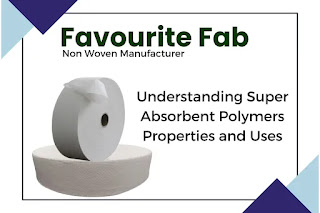Non Woven Material Types: Comprehensive Guide to Properties and Applications
Non-woven materials are widely used across various industries due to their versatility, durability, and cost-effectiveness. Unlike woven fabrics, non-woven materials are engineered by bonding fibers together through mechanical, chemical, or thermal processes. This guide explores different types of non-woven materials, their properties, and applications in various industries.
Types of Non-Woven Materials
1. Spunbond Non-Woven Fabric
Properties:
Lightweight and durable
High tensile strength
Breathable and water-resistant
Cost-effective
Applications:
Packaging bags (e.g., shopping bags, medical pouches)
Agriculture (crop covers, plant protection)
Medical (surgical gowns, face masks)
Upholstery and home furnishings
2. Meltblown Non-Woven Fabric
Properties:
Ultra-fine fibers with high filtration efficiency
Soft and lightweight
Water-repellent
Excellent barrier protection
Applications:
Face masks (N95, surgical masks)
Air and liquid filtration (HVAC filters, water filters)
Medical protective clothing
Oil absorbent materials
3. Needle-Punched Non-Woven Fabric
Properties:
High durability and strength
Excellent absorbency
Permeable and flexible
Eco-friendly options available
Applications:
Automotive (carpet linings, insulation)
Geotextiles (erosion control, drainage systems)
Home textiles (mattress covers, blankets)
Industrial cleaning wipes
4. Hydroentangled (Spunlace) Non-Woven Fabric
Properties:
Soft and smooth texture
High absorbency
Lint-free
Strong and durable
Applications:
Personal hygiene (wet wipes, baby wipes)
Medical dressings and bandages
Beauty and cosmetic products (facial masks, cleansing pads)
Industrial cleaning wipes
5. Thermally Bonded Non-Woven Fabric
Properties:
High thermal resistance
Lightweight and breathable
Water-resistant
Good elasticity and recovery
Applications:
Hygiene products (diapers, feminine hygiene products)
Home insulation and roofing
Protective apparel
Automotive interiors
Advantages of Non-Woven Materials
Cost-Effective: Lower production costs compared to woven fabrics.
Customizable: Available in different weights, colors, and textures.
Eco-Friendly Options: Many non-woven fabrics are biodegradable and recyclable.
High Performance: Suitable for filtration, insulation, and protection applications.
Lightweight and Durable: Ensures comfort while providing strength.
Conclusion
Non-woven materials have revolutionized multiple industries with their diverse properties and applications. Whether in healthcare, agriculture, automotive, or personal care, these fabrics offer a sustainable and cost-effective solution for modern-day needs. Understanding the different types of non-woven materials helps industries select the right fabric for specific applications, ensuring quality and efficiency in production.
For high-quality non-woven materials, contact Favourite Fab, a trusted manufacturer and supplier of premium non-woven fabrics tailored to meet your business needs.




Comments
Post a Comment